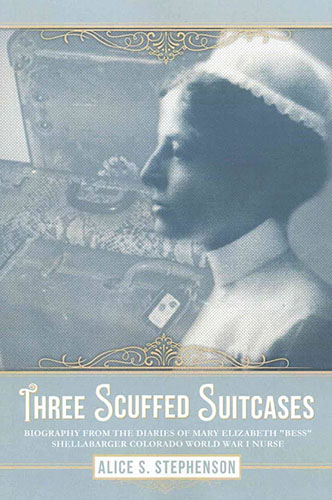What we can learn from the past to deal with coronavirus
A Colorado nurse’s diary recounts battling the Spanish Flu
Dana Brandorff | College of Nursing Mar 11, 2020
From typhoid to smallpox to the Spanish Flu, we’ve had no shortage of epidemics in the US in the last 100 years and no shortage of nurses to help care for the ill. Now, it’s the coronavirus. Precautions were simple 100 years ago – isolation, bloodletting, inhaling steam and ice baths. But not very effective. In some ways, we’ve come a lot farther and in others, we are resorting to the same tried and true methods of containment. Digging deep into the CU Nursing archives at the Anschutz Medical Campus uncovered a real-life account of a nurse who helped battle the Spanish Flu of 1918 and survived one of the most devastating pandemics in history.
 Mary Elizabeth Shellabarger, also known as Bess, was a Colorado nurse who served in WWI. She was part of the University of Colorado Red Cross Unit. When America entered the war in 1917, many University Hospital nurses joined the 100 Red Cross nurses attached to the University of Colorado Base Hospital No. 29 in London. They worked in the Northeast Fever Hospital in Tottenham, caring for evacuated Americans until 1919.
Mary Elizabeth Shellabarger, also known as Bess, was a Colorado nurse who served in WWI. She was part of the University of Colorado Red Cross Unit. When America entered the war in 1917, many University Hospital nurses joined the 100 Red Cross nurses attached to the University of Colorado Base Hospital No. 29 in London. They worked in the Northeast Fever Hospital in Tottenham, caring for evacuated Americans until 1919.
Shellabarger was an Assistant Chief Nurse in London. Her diary -- memorialized in her biography titled Three Scuffed Suitcases -- recounts what it was like to be on the frontlines of the Spanish flu and might be similar to how nurses feel today battling coronavirus.
- 1918 “September 24th: Last night we admitted two wards full of influenza cases from the States, so terribly sick. The first time I’ve done enough work to make my circulation actually start since coming to London. Interviewed Colonel Anderson this am on Infectious Precautions, and before night had orders for masks to be worn by all nurses and attendants in the influenza wards. Those terribly sick boys first landed from America on the same steamer we came on, some twenty weeks ago. I hope the whole hospital will not get Influenza from lax precautions in isolation of the cases.
- 1918 “September 30th: Only one death the night shift . . . Windows were all opened, wire masks were provided for the attendants and all attendants ordered to get into fresh air five minutes every 3 hours. Gave opiate for pain and stir only when awake.
- 1918 “October 3rd: Walked miles to cover ground after 127 patients were admitted. So many sick nurses too . . . So many nurses sick with Spanish Influenza we hardly have enough to keep the wards going. My voice is gone but I can now stay with my work because the chills and fevers I had the first of the week have disappeared. I can’t keep my vow to myself to go to bed when ill – there are too many off at present.
- 1918 “October 4th:Just as I came on duty at 6:45 pm, Miss Orgren died in Ward E, the first to go from our nursing staff. There was a beautiful tradition of caring for her. The body of our ‘Beautiful Angel of Mercy” was taken to the morgue this morning and I accompanied it to the door. At evening the body was prepared and placed in beautiful repose on the couch in the upper reception room, dressed in white uniform and Red Cross cap covered with protective US Flag and with her head resting on the Red Cross Flag, the symbol of comfort. The RC Nurses wreath of white chrysanthemums at the head and the Red Cross laurel leaf wreath at the foot. Pink roses from army nurse organization and others on the table at sides and orchid with oak leaves and roses from nurses of 29 and violets from St. Luke’s nurses. She will be given a Military Burial.”
- 1918 “October 16th: My Birthday: I have barely been getting around. I know I have the flu, but just keep going. We have trouble keeping the delirious boys in bed. They think this is their dorm. Losing corpsmen and 16 nurses ill from Influenza and Pneumonia (plague).”
- 1918 “October 21st: We are almost overwhelmed with the influenza plague which is spreading over London, over the whole World in fact. There are no vaccines in London to immunize the command, as is the custom in infected districts of the USA. I’ve decided to do something to save my sanity, I am taking organ lessons from the organists at St. Anne’s Church.”
|
Shellabarger lived through the flu that killed 50 million people worldwide. Perhaps she survived because she was a little older – 39. Most of those who died were young adults, in the prime of their lives.
The CU Nursing History Center at the Anschutz Medical Campus is open Tuesdays from 9 – 4 p.m. Get a glimpse into the past. Read accounts of nurses and see how they lived.